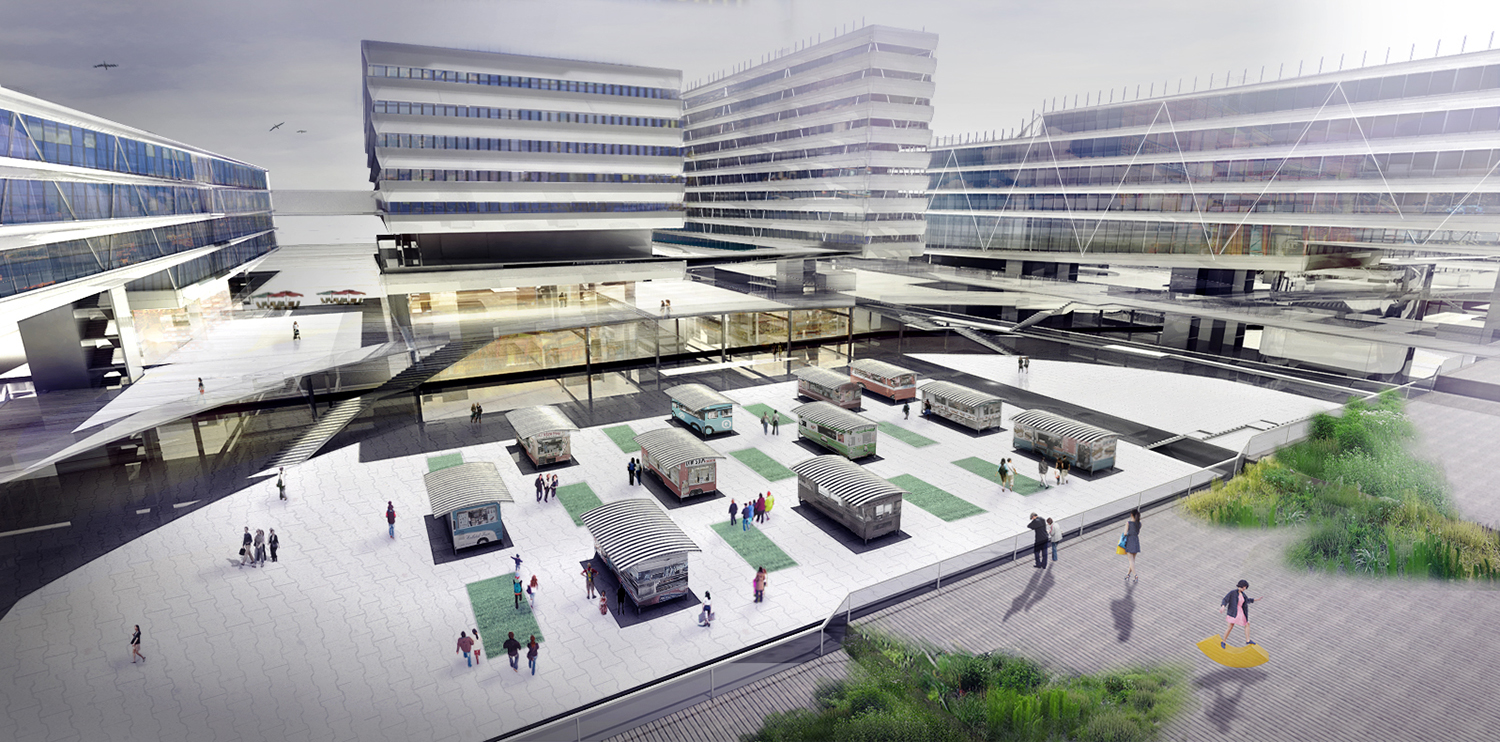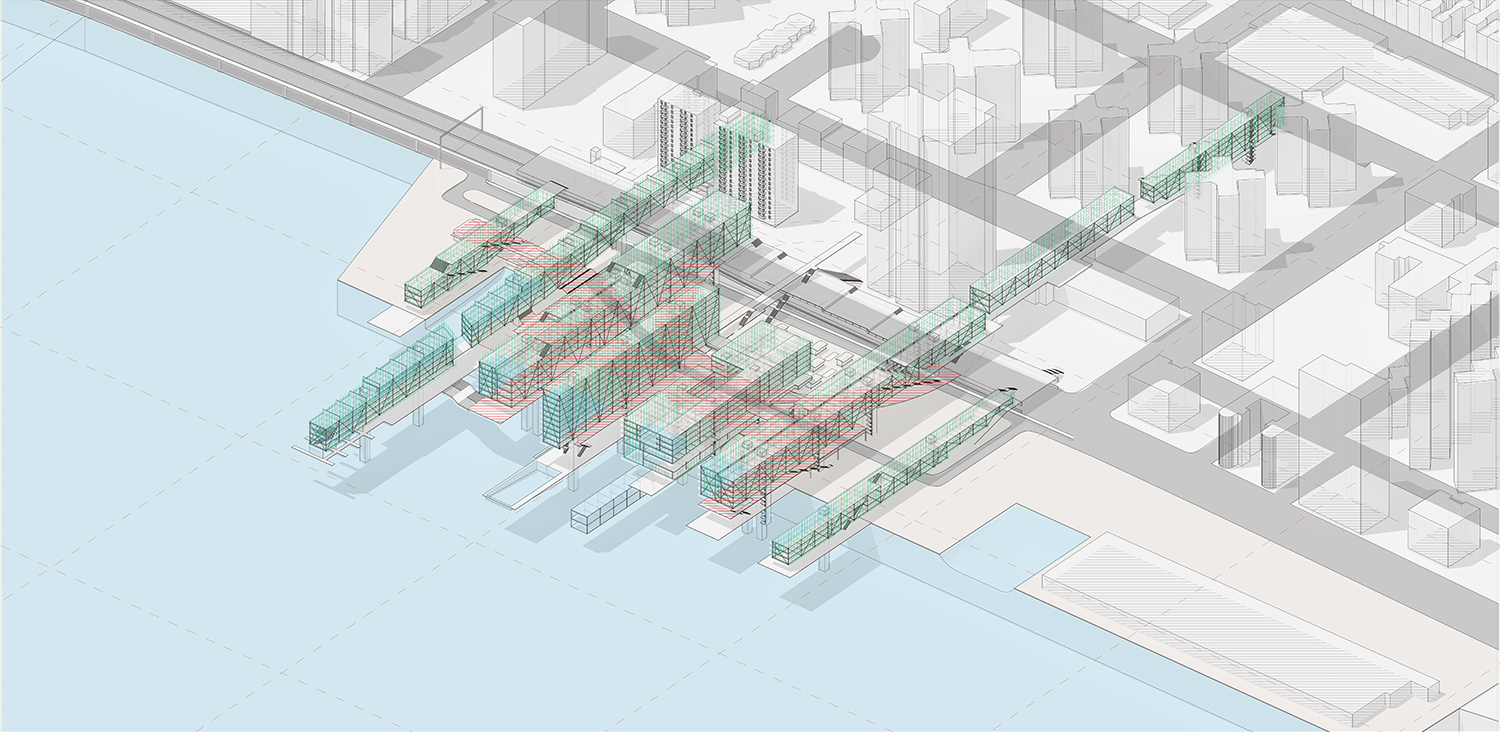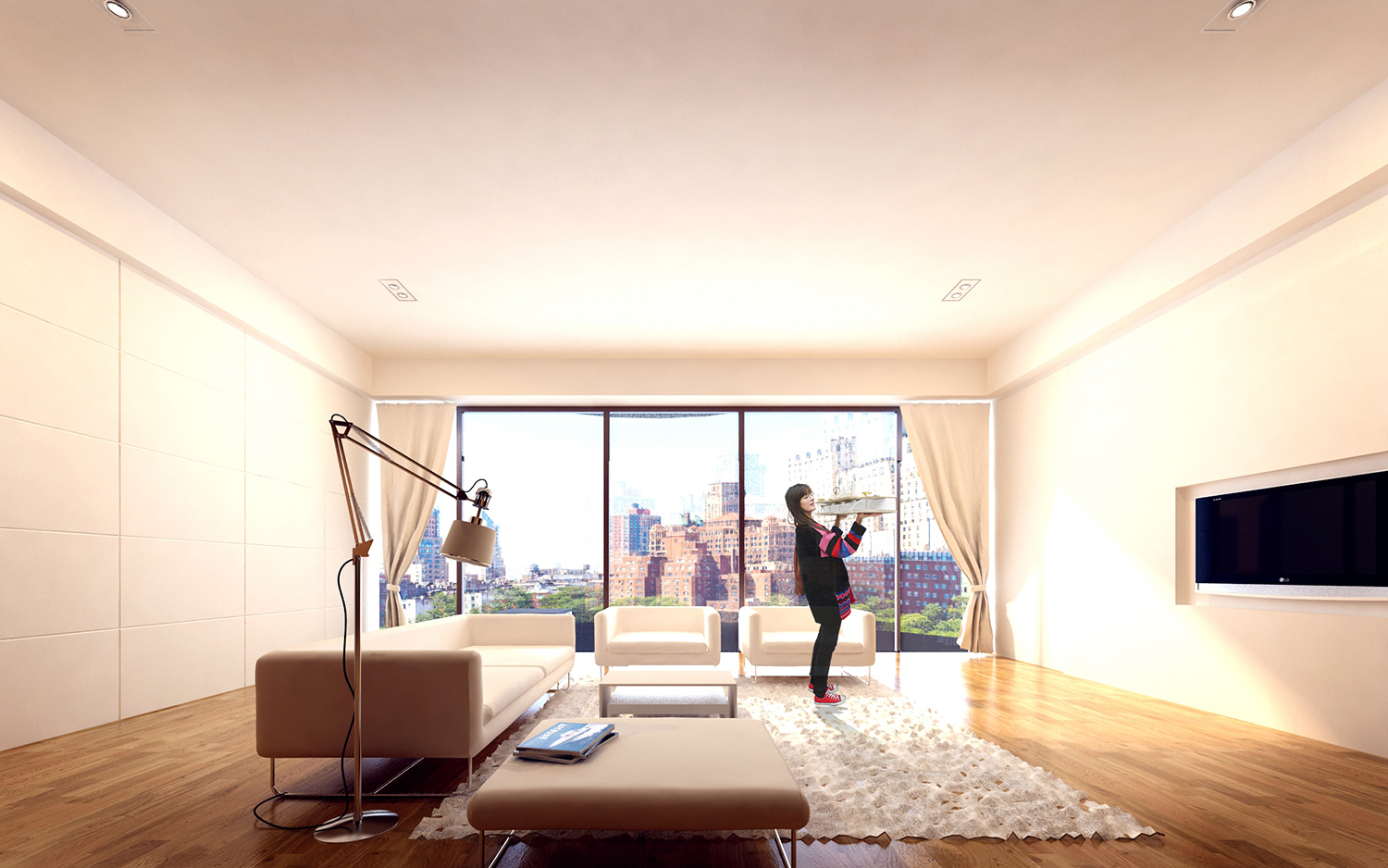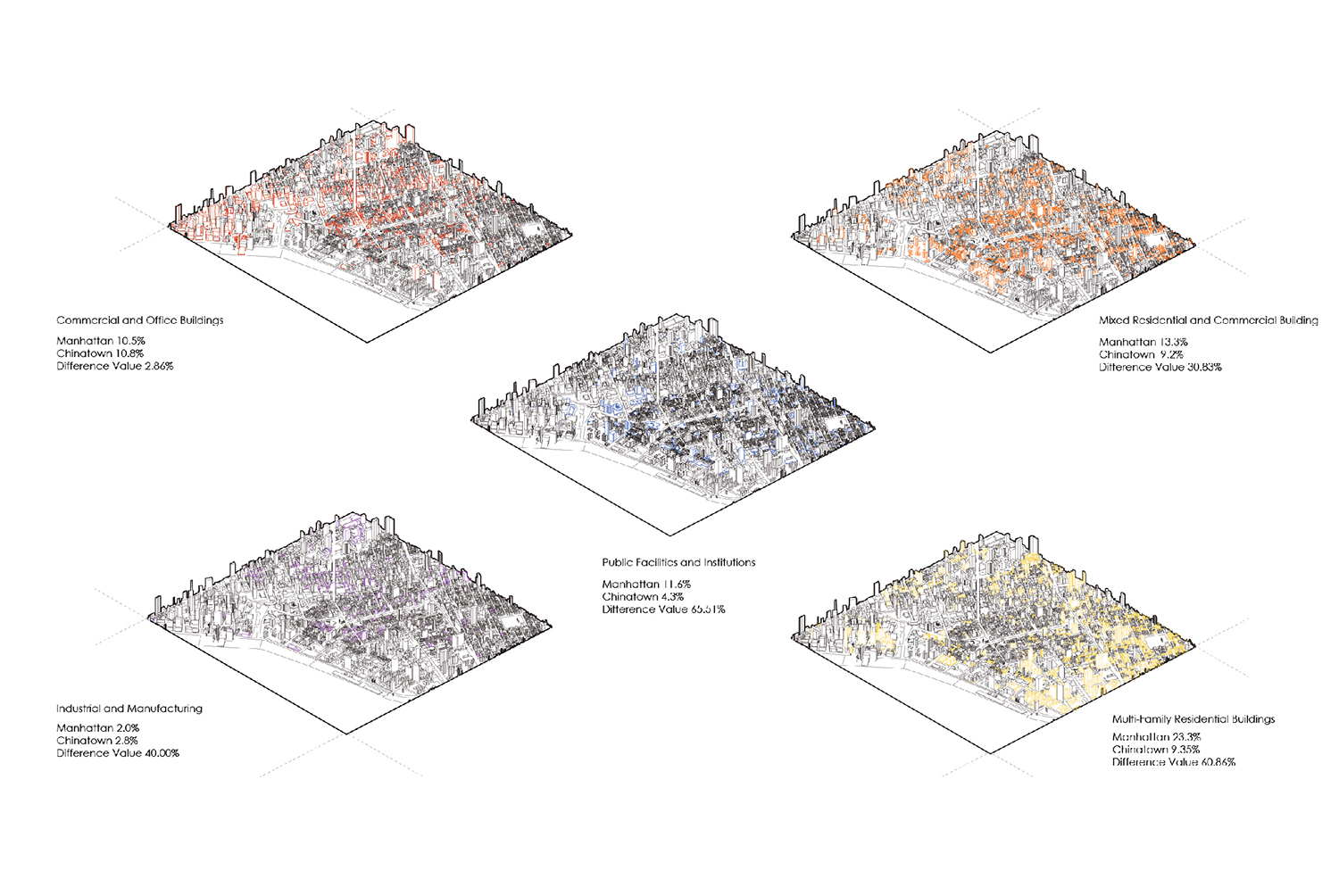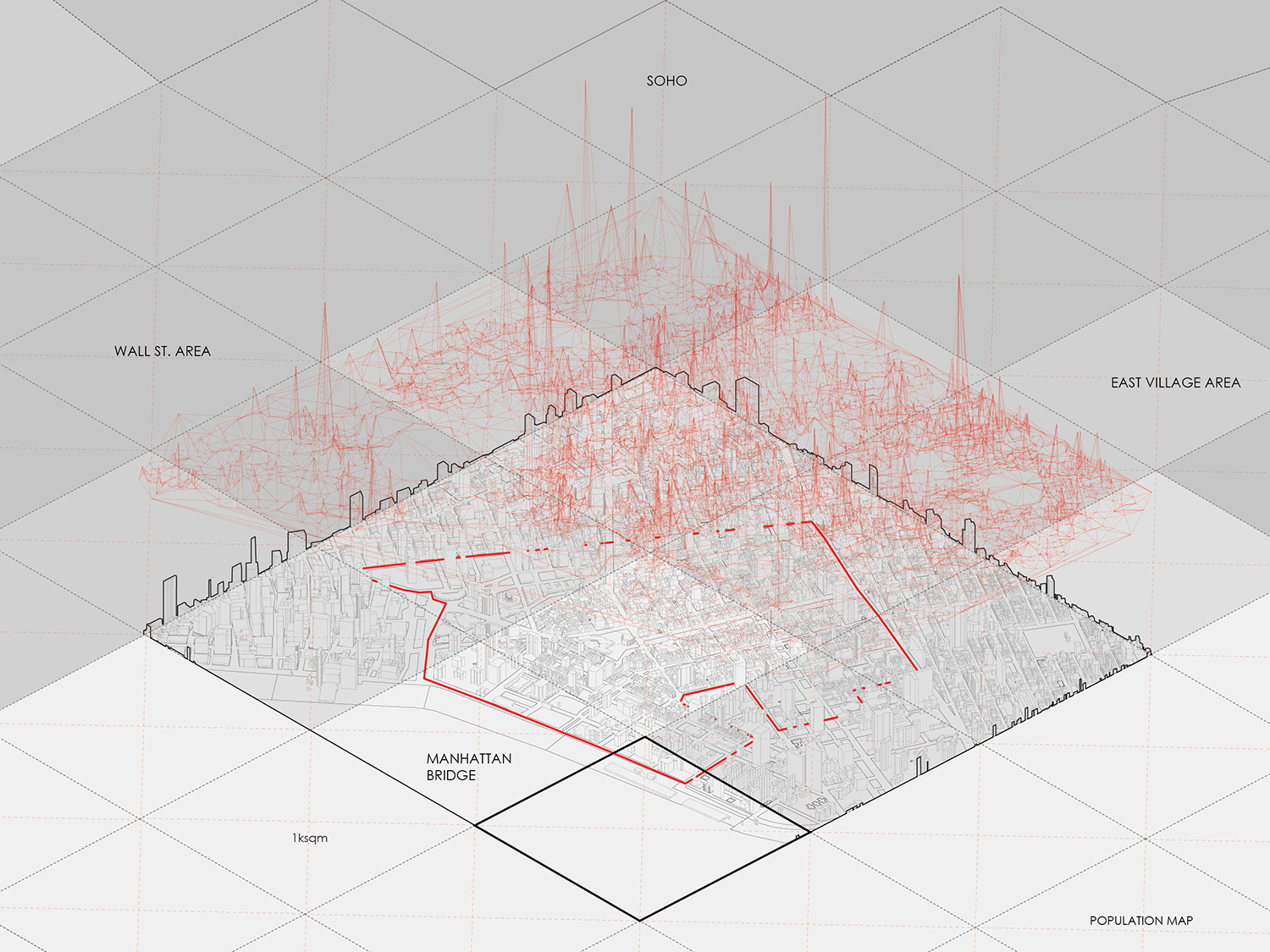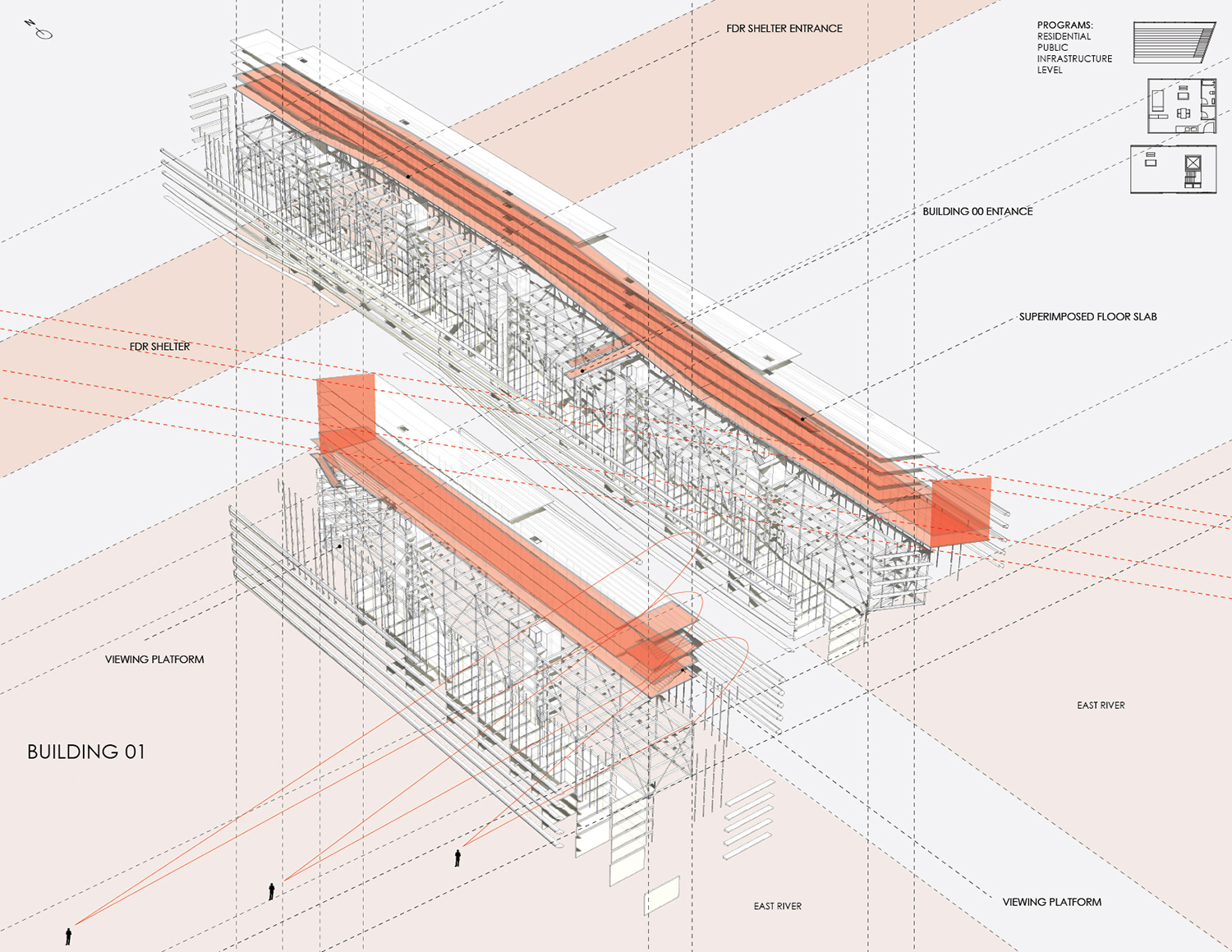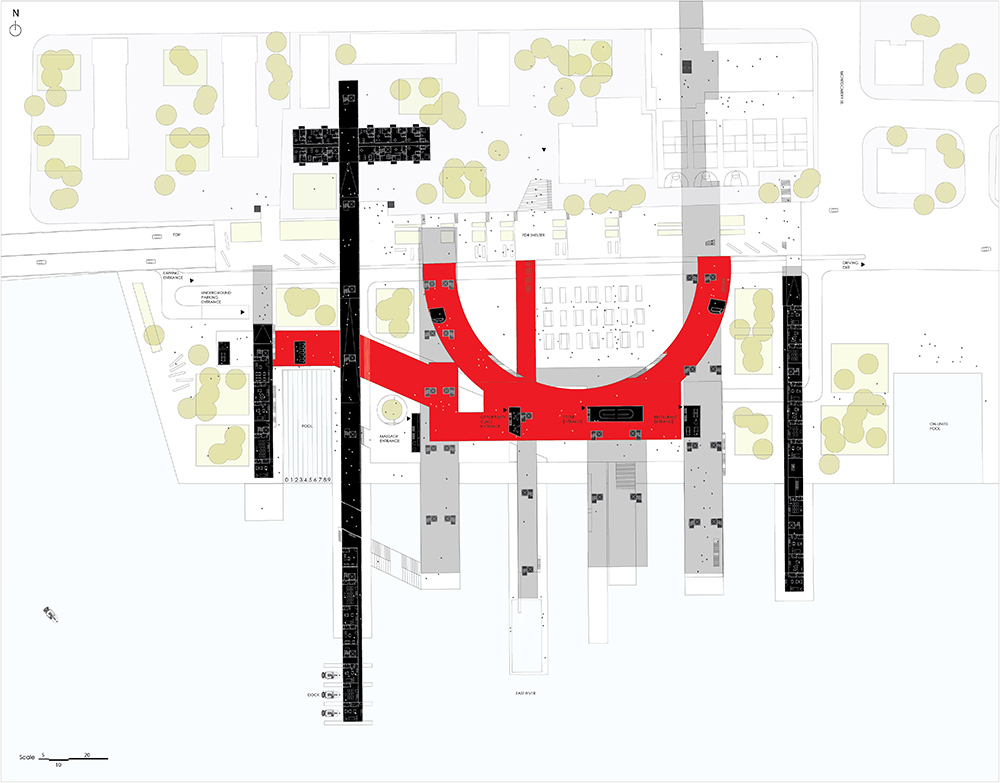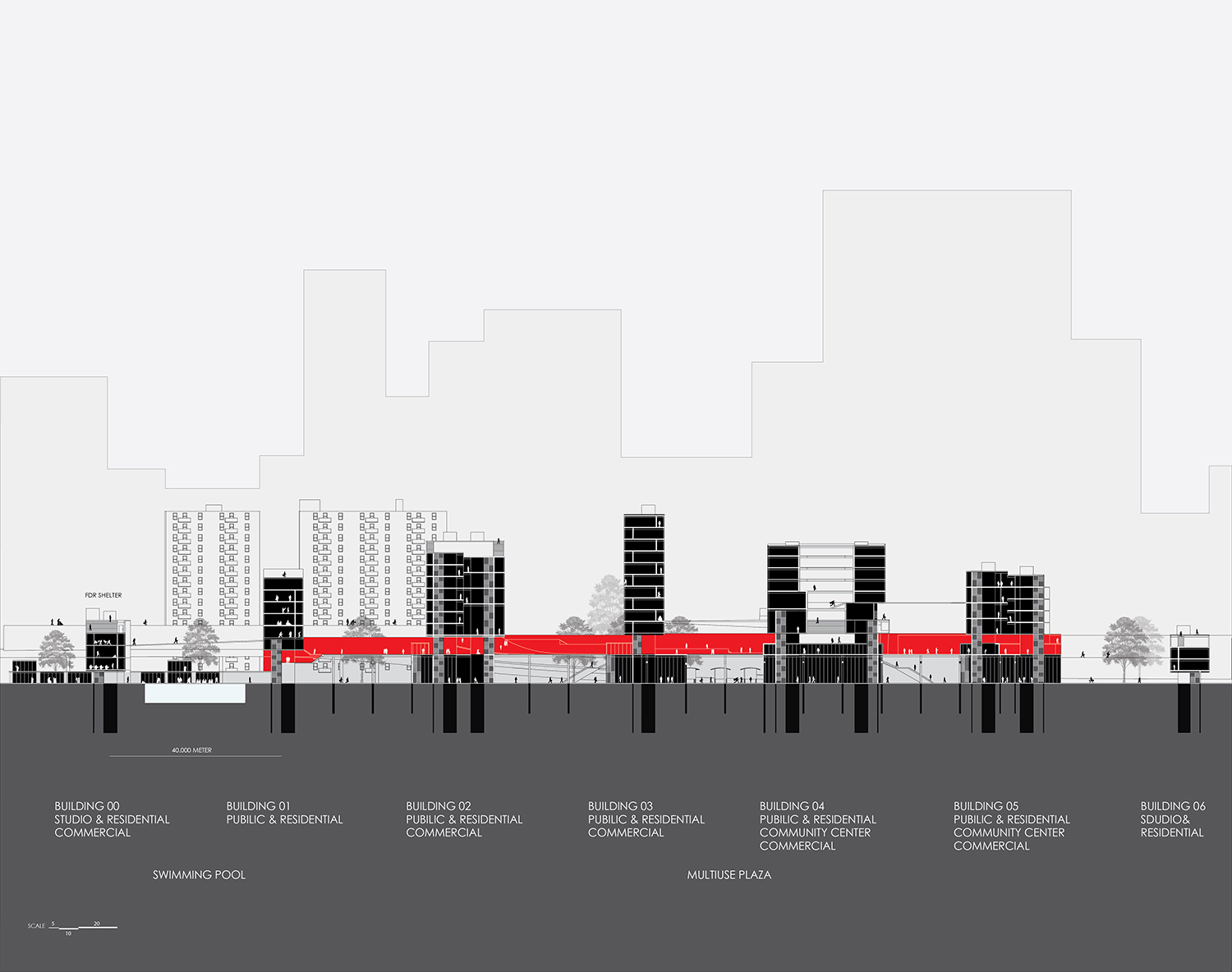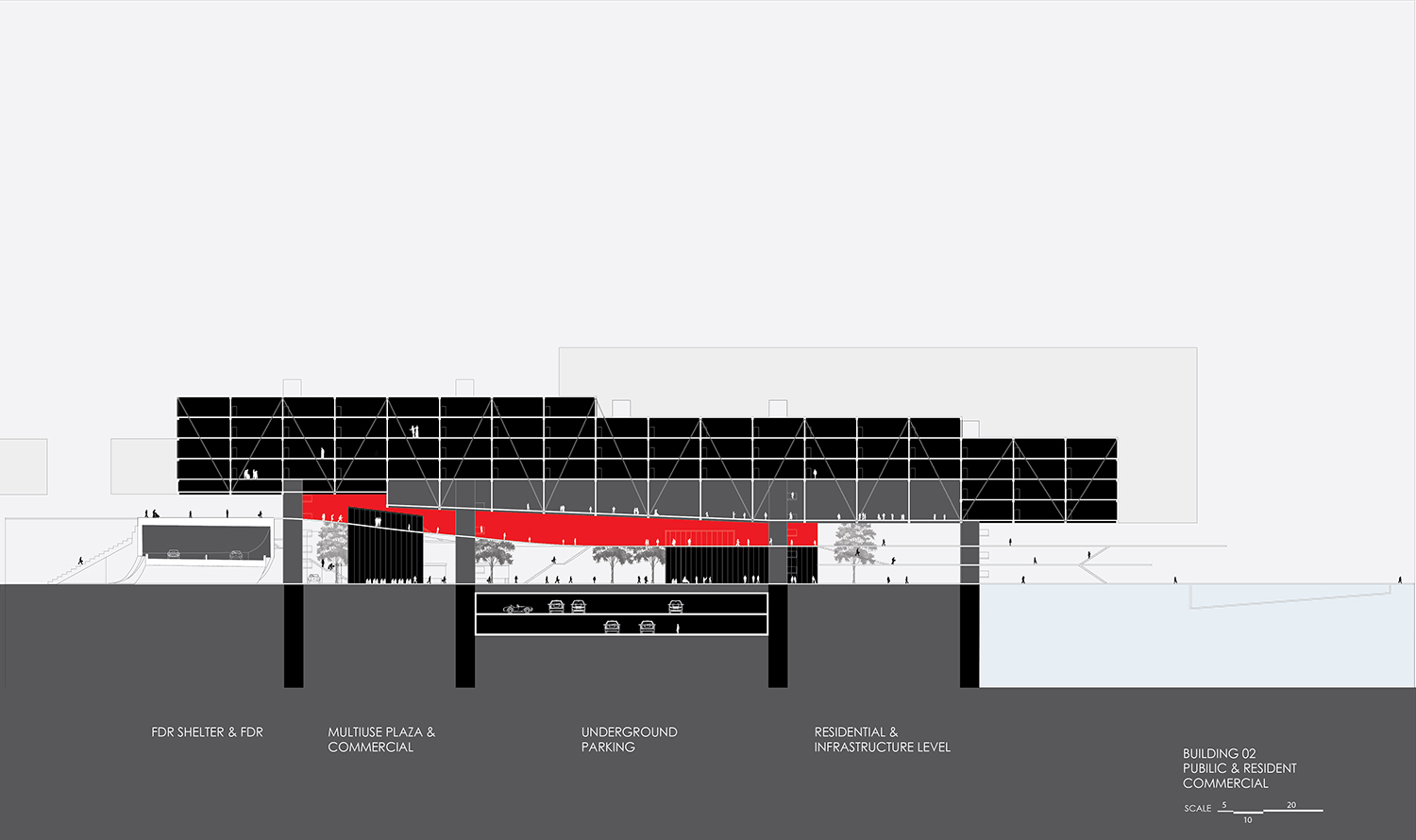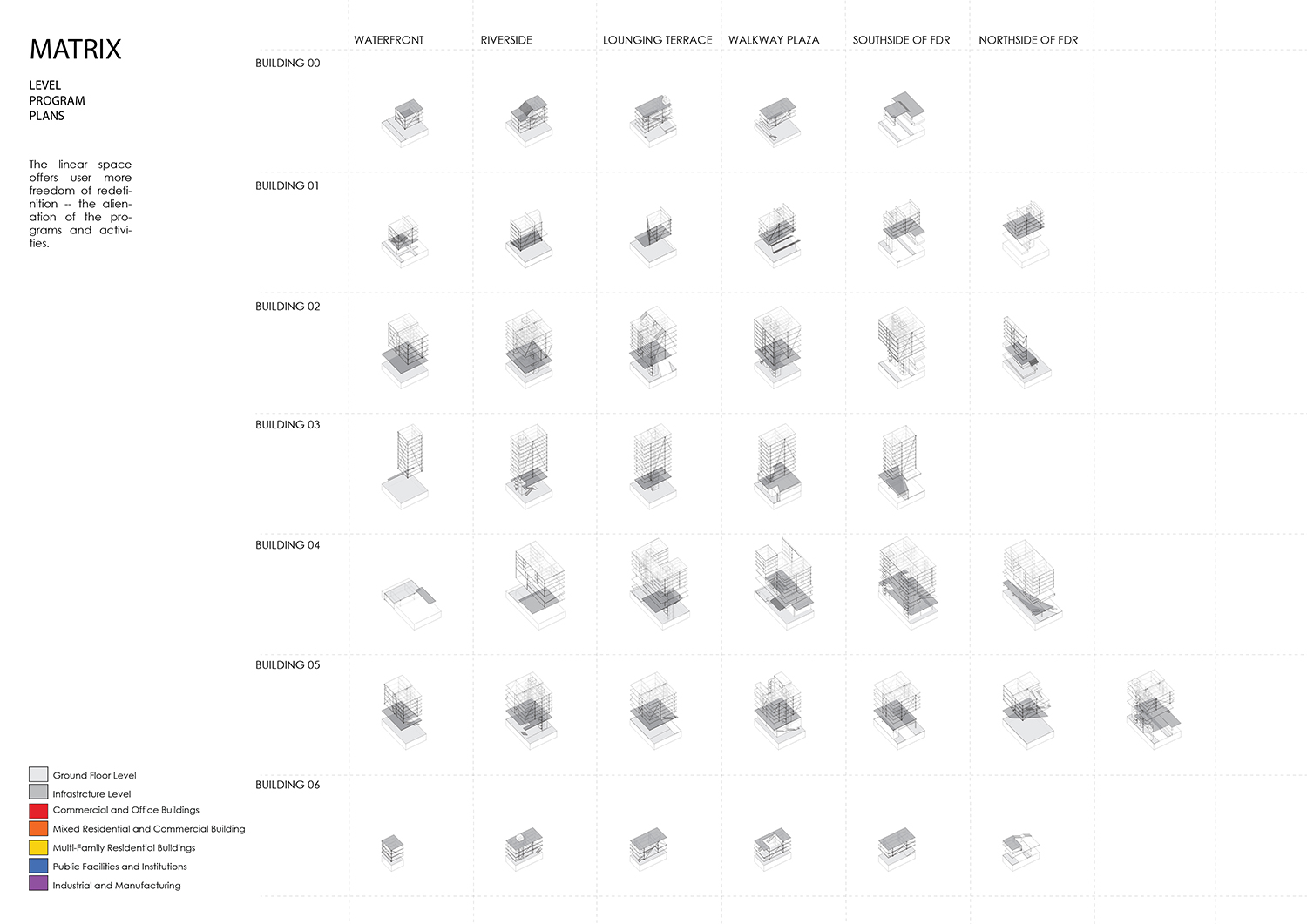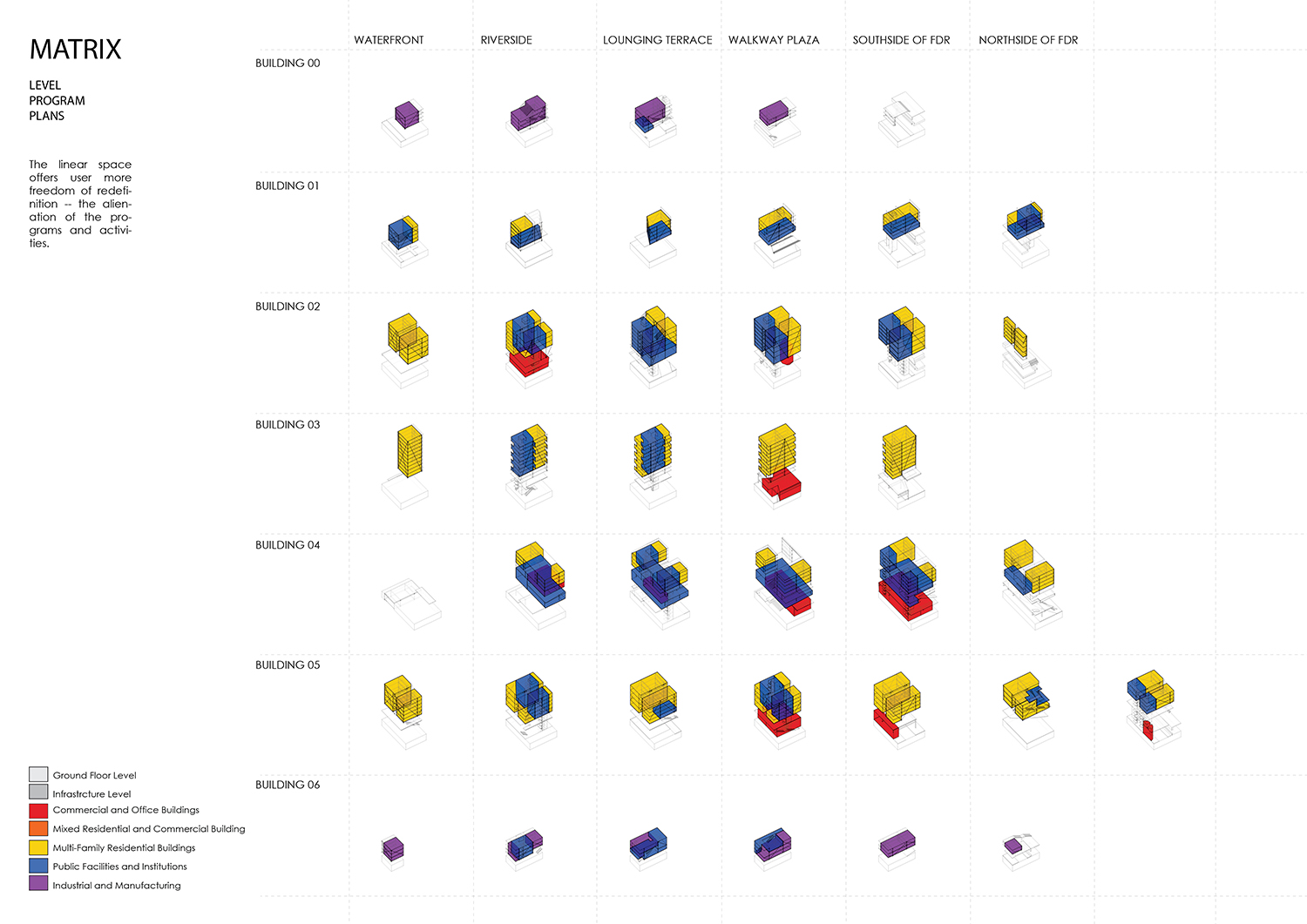Alienation
Yike Peng
GSAPP, Columbia University
Academic/ Individual Work 2013 Spring Semester
Director: Juan Herreros + José Aragüez
When you change the use of something, actually you change the definition of it. This process can be considered as a kind of alienation. In this project, changing the basic use of architecture elements is a new strategy to explore how far we can push the residential architecture.
Chinatown Manhattan is one of the few “Chinatowns” in NYC and one of the 300 existing around the world today. It works like a dynamic city in its own right, comprised of residential, productive, business, commercial and cultural sectors. Current conditions are dissimilar. Most of the buildings are over a hundred years old and have never been renovated.
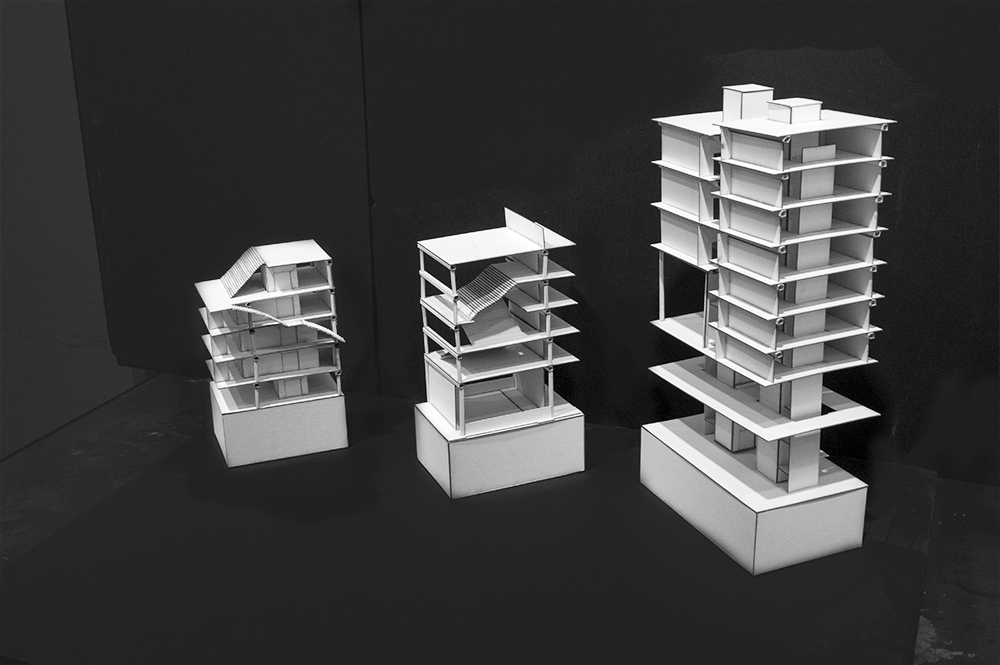
The project is aimed at misusing the regular residential building as an infrastructure and creating divergence zone of private and public. Bring Chinatown people to the riverside and revitalizing by attracting more people outside the Chinatown is the main strategy. Programmatically setting a new relationship among the project, river, FDR and the existing building revives the ordinary order a new potentiality and unfolding new typology.
The Urban issue is always condensed from the society. Deconstructing society itself is a precise way to solve urban issue rather than those architects who hastily denouncing their utopian appeal just after a glimpse of contemporary society. The contemporary one is already overstepped for architects to unscramble it.
The proportion of different programs is based on the idea that “mega-structure as reinforcement”. After analyzing the proportion of each program and comparing to the average level of the Manhattan, the multi-family residential program and public institution program are condsidered as the major embedded program. Meanwhile, bring the commercial program as the “watcher” to the public area is responding to Jane Jacobs’ idea to avoid the public space deteriorating.
